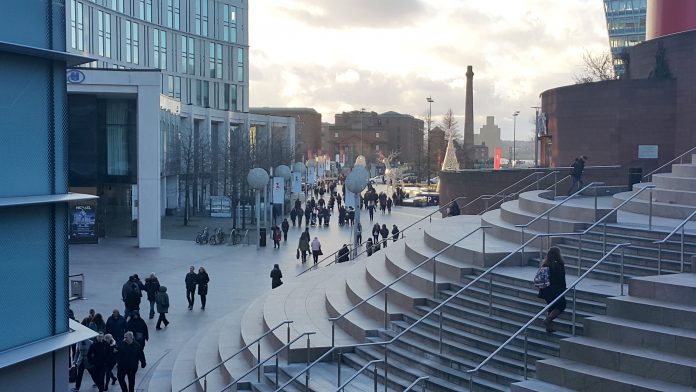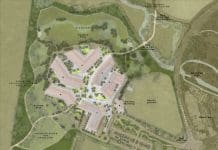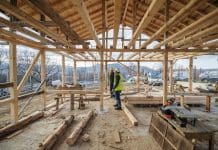Greenfield development continues to outpace building on brownfield land. But will policy changes such as the Housing Infrastructure Fund and brownfield registers turn the tide? David Edwards of Place-Make examines the evidence
The benefit of focusing new development around built-up areas is clear – towns and cities are platforms for change, expansion and diversity, areas of natural beauty can be preserved and, from the perspective of an urbanist, it would be nice to see some life brought back to those boarded-up infill sites.
Despite this, it often remains quicker, easier and more cost-effective to develop greenfield sites. So much so that, according to a recent article in the Times, greenfield development is currently at its highest level in 25 years, equating to an area the size of Glasgow each year.
Although startling, such statistics should also be considered in relation to the situation that we now find ourselves in. Housebuilding levels have been declining since the 1960s and against this any increase appears magnified, while last year, the overall number of completions on both green and brownfield sites reached a 10-year high.
At the same time, half a century of reduced supply has brought us to a critical point where it is understood that 250,000-plus new homes are needed each year, representing an area the size of Manchester. While such scale comparisons are useful as illustrative references, it is difficult to comprehend these without understanding the method of calculation and, ultimately, the housing ‘crisis’ is far more complex than simply balancing supply and demand.
To me, the underlying message here is that greenfield development still appears to be moving at a much faster rate than brownfield development – in spite of all that we know about a brownfield-first approach. Partially, this is market-driven but given the need for an overarching framework to guide and control the UK’s growth, it could be asked – is the government really doing enough to promote brownfield development? Or worse, could it be turning a blind eye on the basis that housebuilding levels are improving in any case?
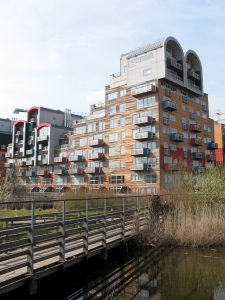
In the 1980s, a significant increase in the rate of brownfield development corresponded with an upturn in the completion rate of new homes. After the recession of the late 1970s and early 1980s, large areas of former industrial and manufacturing land were available for reduced values. Construction costs were lower and the industry was more diverse, with a greater number of small and medium-sized developers and contractors, who were significant in boosting overall supply by delivering smaller infill sites.
At this time, the principal intent was not to increase housing stock but an urgent need to regenerate redundant dockyards, depots, terraces and town centres that lay in states of disrepair and disuse. From these areas emerged vibrant, mixed-use districts that are now embedded within the fabric of towns and cities across the UK – Canary Wharf, Greenwich Peninsula and Paddington Basin; the harbours of Belfast and Portsmouth; the quaysides of Salford, Glasgow and Newcastle and the waterfronts of Liverpool, Cardiff and Hull.
Bringing together mixes of residential, retail, commercial, leisure and tourism accommodation with good transport links and a variety of public open spaces, such developments have since become exemplars for sustainable design, urban renewal and regeneration, which are now being translated to similar conditions overseas.
While the nature of today’s brownfield sites may vary from the expansive areas of the 1980s and 1990s, development intent has changed also and, given the need for predominantly residential accommodation, smaller infill sites that are more evenly distributed could be well suited to accommodate this – if the potential of such sites can be harnessed.
Following the 2017 Housing White Paper, the details of two initiatives emerged that are now beginning to come to fruition: the Housing Infrastructure Fund (HIF) and Brownfield Land Registers. Combined, they could have a major impact for the delivery of brownfield sites, suggesting that in reality, the government has been acutely aware of the opportunities presented by previously developed land for quite some time.
An earlier article for PBC Today looked at the HIF in greater detail. Representing a potential pot of up to £2.3bn for infrastructure improvements across the UK, the fund makes two core assertions: that growth should be directed by a top-down, holistic approach and also, the importance of underpinning new development with a robust physical and social infrastructure.
Supporting these, funding would only be released to local authorities that can demonstrate the ability to spend it before March 2021 (encouraging quick delivery) and proposals should be coordinated with other public and private sector initiatives (encouraging an integrated strategy).
Through its infrastructure-led approach, the HIF will assist in unlocking brownfield sites often constrained by the extra cost of remediating, repairing or reconnecting these for new development. Additionally, the separation of HIF into a two-tier system depending on the size and location of the local authority supports expansion in areas that are already of a more urban/less rural character, thereby focusing attention on sites that are within or close to existing built-up areas.
If the HIF could be seen as a macro approach, brownfield land registers would be the micro approach, targeting growth at a local level on site-by-site basis.
Since the end of 2017, local authorities have been required to carry registers of brownfield sites that are considered to be appropriate for residential development.
Registers will be coordinated with development plans and needs assessments to marry these with the overarching strategy and updated annually to provide a ‘live’ quota of potential sites. Similar to HIF, the register is separated into two tiers: Part 1 contains all sites that are considered to be suitable for housing, irrespective of their planning status, while Part 2 specifically lists sites that may be fast-tracked for permission ‘in principle’.
Essentially, greenfield land may not be included on brownfield registers with the significant impact that in the first instance, housing needs will be directed towards brownfield sites that are considered to be ready and feasible.
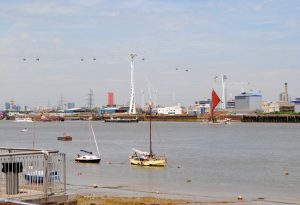
According to recent research by the Campaign to Protect Rural England (CPRE), the amount of land that has been identified in brownfield registers is estimated as having the potential to deliver up to 1.1m new homes – enough to meet the entire country’s five-year housing quota. If viable, this should represent the basis for a fundamental shift in our approach to delivering new homes.
However, at the moment, it is not known if this assertion is based on Part 1 or Part 2 sites, or if this assumes that housing requirements would be met at a national or a local scale. For instance, it would be incorrect to appropriate London’s housing needs in relation to the availability of Part 2 sites in Sunderland and Bristol or, conversely, rural housing needs in relation to the availability of brownfield land in the nearest towns and cities.
Additionally, there is a concern that flipping non-residential brownfield sites for quick housing gains will lead to the decentralisation of employment-generating activities. The impact of this is already been felt in London, Birmingham and Manchester, where a buoyant residential sector has led to a deficit in affordable accommodation for employment-generating activities. In effect, development will still overspill on to greenfield sites but in the future, this could be for industrial, manufacturing and production activities, which have a far greater environmental, physical and social impact than housing.
Translating brownfield registers to a regional and national scale is tantamount to critiquing the HIF for not identifying specific sites. Rather, this is the strength of a two-pronged approach; while the HIF focuses on tackling long-term growth at a regional scale, brownfield registers identify non-greenfield sites that may be developed with immediate effect. Equally, tying both mechanisms to development policy under local authority control with help from Homes England (formerly the HCA) and the Ministry of Housing, Communities and Local Government (formerly DCLG) should ensure a coordinated and measured approach.
While both policies emerged in 2017, the impact is most likely to be felt from this year – Part 2 brownfield sites have already been identified and within a month, both tracts of HIF will have been released with the potential for more streams to follow. If the combined impact is successful, to me, the government will have overcome significant aspects that have been holding back brownfield development for a number of years: identifying and unlocking viable sites, releasing funding for key infrastructure and establishing a system that would fast-track schemes through the planning system.
From here, the impetus swings to delivery and the responsibility of the construction industry to ensure that the opportunities presented will be planned, designed and implemented in a sustainable manner. The scale of opportunity to assist in reversing a housing market that has been in decline for decades, enhance the offering of towns and cities and establishing the new precedents for urban living in the 21st century could not be greater.
David Edwards
Director
Place-Make
Tel: +44 (0)1462 510 099
Twitter: @place_make


